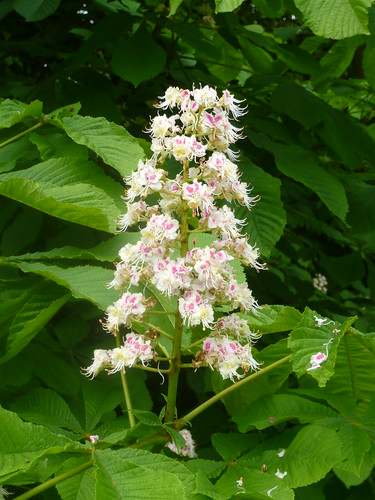Ornamental Horse Chestnuts Shrubs
Grow your own conkers but small may not win too many conker contests.

Most people recognise the large ornamental Horse Chestnut trees with the palm-shaped leaves and spring racemes of flowers that lead to conkers in Autumn. Unless you have a large paddock or personal woodland it is unlikely that you grow Horse Chestnuts (Aesculus Hippocastanaceae) but the family contains some smaller varieties.
Aesculus x mississippiensis and Aesculus mutabilis are large shrubs or small trees with flowers that are dark red and yellow.
The Aesculus pavia in USA is called the Dwarf Red Buckeye tree. It is early to leaf and starts blooming when it is just 3 feet tall. This 3-10′ deciduous tree is a wonderful little red flowering tree to plant at the edge of a woodland garden or as the focal point on the curve of a path.
Aesculus Parviflora or Bottlebrush Buckeye is an attractive shrub, up to 10 feet high. The white flowers are borne in erect spikes or racemes.
Aesculus sylvatica is a rounded shrub or small tree, up to 25 feet high and wide that has yellow to reddish coloured flowers on the spikes.
Buckeye is the State flower of Ohio and has its own web site

Not particularly a gardening book Horse Chestnut ‘is a study of the commonest species in Britain. Do you know why it is called the ‘horse’ chestnut and that it is used in shampoos and how you take it on holiday with you? British forces would not have kept Germany out of England during the First World War without this tree. There would not be a State of Israel without it either. Remember learning Under a Spreading Chestnut Tree? Well who wrote it and how many versions are there? Bet some of you have played ‘Conkers’ but how old is the game? Which artist has painted the tree more than any other and do you know about ‘Chestnut Sunday’ in Bushy Park?’